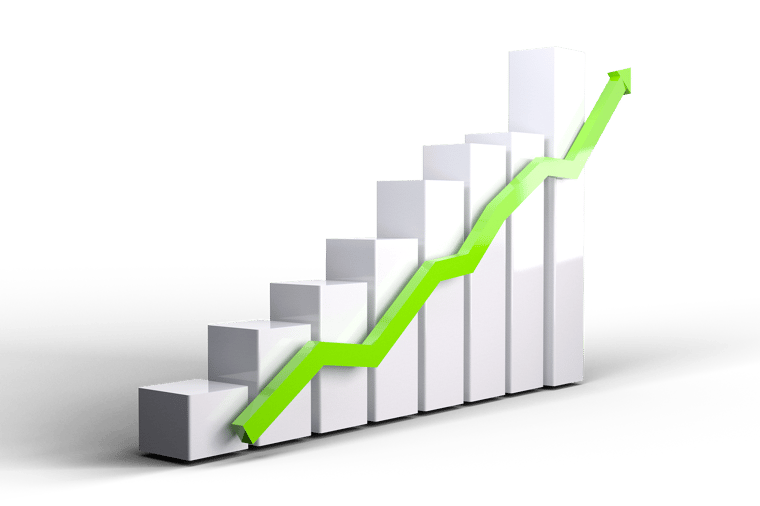Now that we are two months in, we looked at a few dozen companies with minimal impact to their revenue (consistent revenue) and a few dozen with more pronounced impact (underperforming revenue) to understand execution patterns. We did our best to remove companies that fell into the reduced revenue group because they sold to a significantly impacted vertical like hospitality.
Here’s what we found:
- Consistent revenue is not aligned to pipeline growth. All of these companies actually saw even or, in most cases, declines in either pipeline value or number of opportunities from 5-15%.
- It’s execution focus. An increase in close rate or deal size with shorter sales cycles made up the difference.
The early advice I read said to leverage this time to build pipeline. The focus is not to close business, but to have conversations. This assumes you should see your pipeline value increase while close rate decrease and sales cycles lengthen.
So what are the consistent revenue companies doing differently to improve close rates and deal velocity?
1) Don’t sacrifice quality for quantityThe underperforming revenue companies relaxed guidelines on sales qualified opportunities, predominantly expanding the roles the team can prospect to keep the pipeline full. I get it, we want our teams to feel successful in an uncertain environment.
However, the consistent revenue companies viewed this time as an opportunity to get their decision maker engaged and focus on how they could solve a problem now, not in the future.
/Picture2.png?width=600&name=Picture2.png)
Read more about pivoting verticals and value propositions in
5 Steps to Pivoting Sales for Success in a Down Economy
2) Remove Fool’s Gold from your pipeline
The best way to keep the “fool’s gold” out of your pipeline is to base your opportunity stages by customer actions vs. seller actions. This allows you to measure the engagement of your buyer throughout the process to improve forecasting, coaching and refine strategy/process.
For example, one of Stage 2 Capital’s portfolio companies, Negotiatus, measured Decision Maker attendance at their demo stage. They discovered that 75% of opportunities where the decision maker attended the demo moved to closed won (vs. their 20-25% average) AND the velocity post demo was shortened to one week. Had they only measured that the sales rep completed a demo, they would never have uncovered this trend.
Another consistent revenue company noticed opportunities getting stuck in the proposal stage of the pipeline. When they dug in, they realized that sales reps were moving things to proposal because they sent a proposal, however, there was no engagement from the Decision Maker post demo. Once they added a step to schedule a proposal review meeting at the end of the demo and track if the decision maker attended that meeting, they realized those opportunities closed faster, it gave them much more accurate forecasting, and helped them coach the team to improve selling value to the decision maker.
Example of Opportunity Stages with Customer Actions
/Picture1.png?width=700&name=Picture1.png)
3) Use data, not emotions, to make decisions
The reason we track all this data is not only to understand results, but adjust marketing or processes to get the outcome we want. Two tactics the consistent revenue companies are using now to help them evaluate and pivot are:
- Uncovering the trends in the prospects that ARE moving forward, not just the ones that don’t. Why is your close rate increasing? Can you look under the hood Where do you see shorter sales cycles? Looking at each variable against a KPI metric will help you start to see opportunities. One company we reviewed saw that their deal size had decreased in a couple of verticals that are higher risk, so they deprioritized those verticals.
Example of measuring revenue variables against KPIs to adjust strategy

Other variables you can measure in the same format include:
/Picture4.png?width=600&name=Picture4.png)
Make sure you can accurately track these variables in your CRM.
- Identifying the reps that are replicating these trends, defining what they are doing, and deploying it to their broader team. This includes both what these reps are doing and how they are doing it.
While most of your team has adjusted to our current state of working from home, uncertainty breeds anxiety and lack of focus. The more you can keep your team motivated on the activities you’ve identified are driving the pipeline forward, the less impacted your results.
- Increase their payout, not their quota. I love how another Stage 2 portfolio company kept quotas the same but adjusted the commission payout to be 100% at 60% to quota. By doing this, they kept the team focused on their KPIs without lowering expectations, but removed the anxiety around their paycheck so they could focus on adjustments to their process.
Here’s an example of how that would work. Assume the reps have a $25,000 monthly quota and make $3,500 in commission at quota. In Scenario 1, the quota was lowered 40% and the payouts adjusted accordingly. In Scenario 2, the quota remaining by the commission payout % was lowered. They both have similar unit economics, but Scenario 2 keeps activity level higher and feels like the reps are now making more at quota with an increased payout, but it’s not a quota change.
Scenario 1: Reduced Quota leads to reduced effort at a similar Unit Economics
/Picture6.png?width=600&name=Picture6.png)
Scenario 2: Increased Payout maintains effort with a positive message
/Picture5.png?width=600&name=Picture5.png)
- Run incentives on trends you uncover to drive behavior. This is one of the best uses of incentives so you can reinforce the activities you know will produce results. For example, running an incentive to your SDR team to encourage them to get the decision maker vs. the champion on a discovery call is a good method to increase this metric without negatively impacting your pipeline.
The bottom line is that the companies that are leaning into their process to focus on quality vs. quantity in their pipeline while engaging the decision maker and their teams are the companies least impacted in this environment.
What is your team doing to get more value out of your pipeline?


